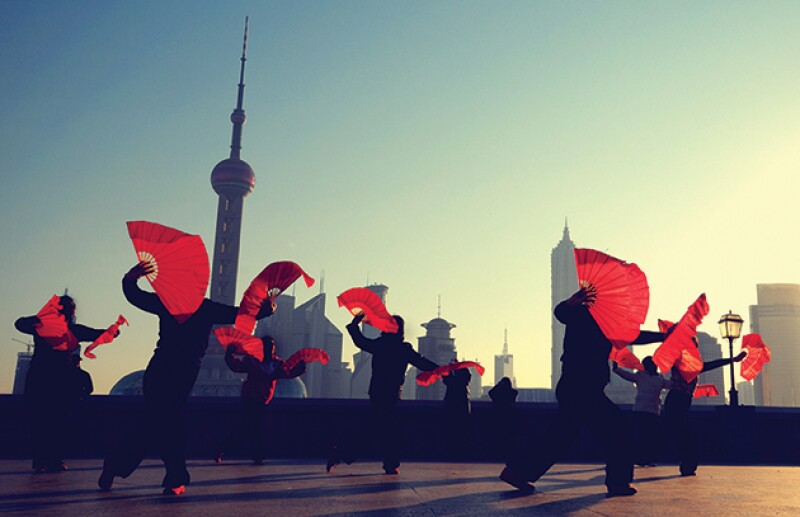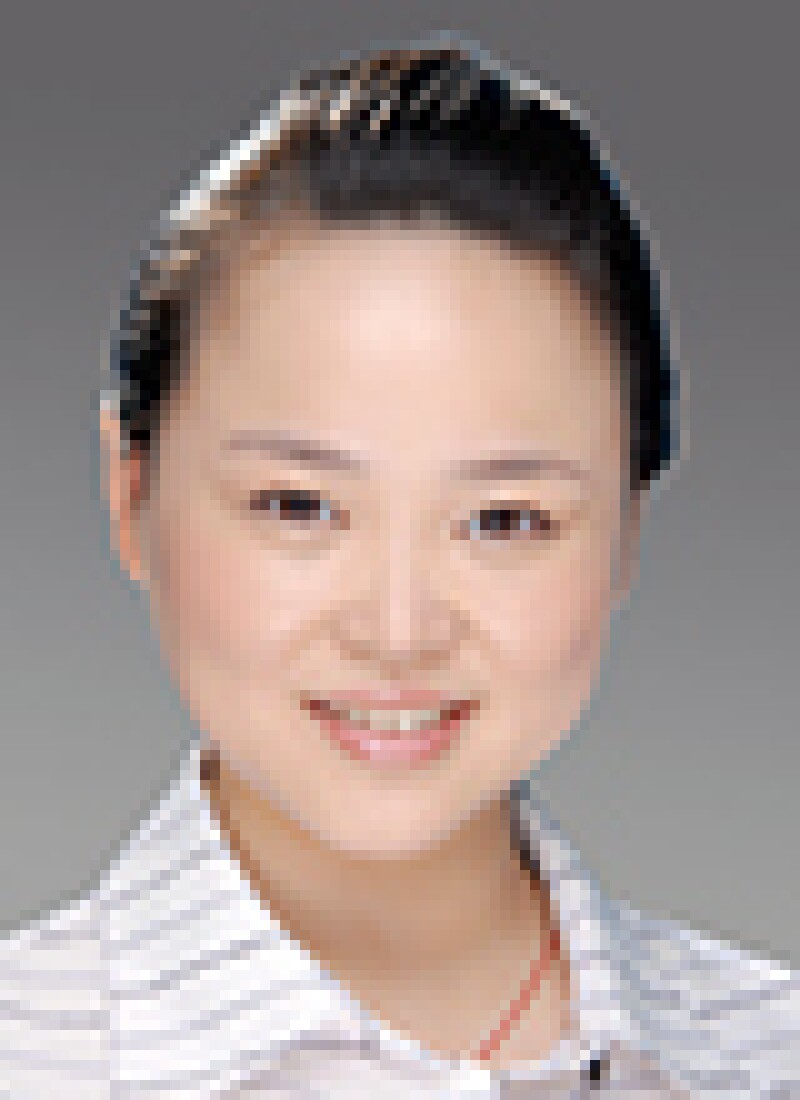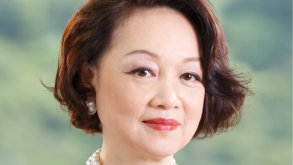
According to many foreign companies, China is not a country where IP, especially patent rights, can be enforced. This notion may be based on the fact that compensation is not as high as expected. There are nearly 100,000 lawsuits related to IP infringement every year in China, and patent infringement lawsuits have reached nearly 10,000. In fact, the number of lawsuits with high damages is also increasing.
Using practical examples of litigation cases, it is possible to see how compensation for damages in China is calculated and understand how to adduce evidence in litigation in order to obtain relatively high damages.
Methods of calculating damages
The general principles of the Civil Law and the main laws concerning IP rights and the relevant judicial interpretations all expressly stipulate the civil liability of compensation for damages and specify the methods of calculating compensation for damages.
1. Actual losses of the IP owner
These equal the total amount by which the IP owner's sales volume is reduced as a result of the infringement or the total number of infringing products sold on the market (where the total amount by which the IP owner's sales volume is reduced is difficult to calculate) multiplied by a reasonable amount of profit for each product.
2. Profits earned by the infringer
This is calculated using the total number of infringing products sold on the market multiplied by a reasonable amount of profit for each infringing product.
3. Based on the royalty
This varies according to the type of right concerned, the nature and circumstances of the infringing act of the infringer, the amount of the royalty, the nature, scope and period of validity of the licence and other factors.
4. Statutory damages
In trade mark infringement cases, the statutory limit has increased from Rmb500,000 (US$76,050) (the 2001 Trade Mark Law), to Rmb3,000,000 (US$456,300) (the 2013 Trade Mark Law).
In patent infringement cases, the limit for statutory damages is Rmb1,000,000 (US$152,100) (the 2008 Patent Law), increased from Rmb500,000 (US$76,050) (the 2000 Patent Law). Moreover, in the recently published Draft for Comment of the Fourth Amendment of the Patent Law of China, the limit on compensation is set to be further increased to Rmb5,000,000 (US$760,500). In contrast, in copyright infringement cases, the statutory damages still does not exceed Rmb500,000 (US$76,050).
Although the legal provisions prescribe the range of the statutory damages so as to prevent excessive judicial discretion, it is possible to exceed the maximum for statutory damages in specific cases based on the evidence.
5. Reasonable expenses
In addition to the compensation for damages calculated in the aforementioned manner, the owner can also ask for compensation for reasonable expenses incurred in the enforcement of the right concerned.
Adducing evidence
The formulas mentioned above for calculating compensation for damages are used in sequence. That is, compensation for damages shall be calculated according to the actual losses suffered by the owner. When actual losses are difficult to determine, damages shall be calculated according to the profits obtained by the infringer. When both are difficult to determine, the royalty shall be the reference. When, after employing all of the above methods, damages are still difficult to determine, statutory damages is applied.
However, in practice, as the burden of proof for a claim of compensation for damages is on the owners, they usually choose a method of calculation that is based on evidence.
Actual losses
When the owners claim based on this method of calculation, they are required to adduce evidence regarding the total number of the owners' products of which the sales volume is reduced as a result of the infringement, or the total number of infringing products sold on the market, as well as the reasonable amount of profit for each owner's product. As it is very difficult to adduce this evidence, this method is seldom adopted in civil cases.
In a trade secret case that involved Wuxi Sensong Mechanic, in determining the losses of the owner of the trade secret, the court adopted the method of multiplying the total number of the infringing products sold on the market by the reasonable profit of owner's product (Case No of the first instance: (2011) Yi IP Criminal First No 5; Case No of the second instance: (2012) Xi IP Criminal Final No 0001). During the investigation of the case, the police discovered and seized various materials of the defendants and so managed to determine the total sales amount of four types of machines related to the owner's trade secret sold by the defendants.
In addition, the auditing agency conducted an audit of the sales materials of the owner's products and calculated the reasonable profits of the owner's products. After multiplying the data, the amount of the owner's losses was found to be nearly Rmb7,000,000 (US$1,064,700). Two courts supported this method of calculation and the defendants were determined as guilty of breaching trade secrets. In addition to a term of imprisonment, the court imposed a fine of nearly Rmb10,000,000 (US$1,534,200) on the defendants. Although this is a criminal case related to trade secret theft, the method of calculation for determination of the losses of the owner is relevant for patent infringement civil cases.
Profits obtained by the infringer
Compared to the aforementioned method, the difference between the calculation of the actual losses of the owner and calculation of profits of the infringer lies in whether the reasonable profits are profits of the rightful products or profits of the infringing products.
Although the profits of the rightful products are usually higher than those of the infringing products, as the profits of the rightful products relate to the trade secret of a company, the owner may voluntarily choose to calculate based on the reasonable profits of the infringing products. In addition, when calculating the profits obtained as a result of infringement, the factors contributed by other rights should be eliminated.
For example, in a patent infringement suit between Honda Technology Research & Development (Honda) and Shijiazhuang Shuanghuan (Shuanghuan), the patent in question was a design patent for a bumper, and the infringing product was a front bumper installed on a Laibao vehicle manufactured by Shuanghuan (Case No of the first instance: (2007) No 1 Intermediate Civil First No 14465; Case No of the second instance: (2010) Higher Civil Final No 1746). The court of first instance exercised discretion and set damages at Rmb500,000 (US$76,050), an amount within the range of statutory damages. The court of second instance held that, according to the audit report and the consultation report submitted by Shuanghuan in another case, the sales cost and the whole profit of each Laibao vehicle and the sales volume could be confirmed. Moreover, according to the invoice issued by Baoding Dexin Company to Shuanghuan, the unit-price of the front bumper was Rmb286.32 (US$44), from which the portion of the front bumper in the whole vehicle can be confirmed. In light of these calculations, the court of second instance amended the judgment and set damages at Rmb1,720,000 (US$261,612).
Royalty calculations
Where right owners choose this method of calculation, they should submit evidence to prove the actual existence and amount of the royalty. In order to persuade the court to refer to the royalty, the owner should also submit other evidence to prove the value of the patent and the circumstances of the infringement.
In a dispute involving the infringement of an invention patent between Shandong Joyoung (Joyoung) and Shanghai Shuaijia, (Case No of the second instance: (2007) Lu Civil No 3 Final No 38) the evidence submitted by the plaintiffs proved that Xuning Wang licensed the patent concerned solely to Joyoung for nationwide exploitation, with the licence term being as long as the valid term of the patent and a royalty of Rmb3,000,000 (US$456,300). The licensing contract had been recorded at the State Intellectual Property Office (SIPO). Although the defendants had objections to the patent licensing contract, they failed to provide evidence proving that the licensing contract and the royalty amount were non-objective. Furthermore, when the court of first instance ordered the defendants to provide relevant account books, the defendants refused to do so. After consideration of the above factors, the courts determined compensation to be Rmb3,000,000 (US$460,290).
Statutory damages
Even when applying statutory damages, factors including the type of right and the nature and circumstances of the infringement may have significant effects on the amount of compensation.
For example, in a series of cases between Shenzhen Mindray (Mindray) and Shenzhen Edan (Edan), the plaintiff initiated lawsuits for patent infringement and breach of trade secrets against the defendant based on various multi-parameter monitor products. The case references are, for the patent infringement case: No of first instance: (2011) Shen Intermediate Court Civil First No 260, 267-268, 323-326, the number of the patent concerned is ZL03139708.5. For the trade secret infringement case: No of the first instance: (2011) Shen Intermediate Court IP Civil First No 266. The accused infringing products in those cases are basically the same.
During the trial, the plaintiff applied for an audit of the average profits of the defendant's eight types of multi-parameter monitor products. As the defendant refused to provide the necessary account book materials, the auditing agency conducted the audit using information such as the defendant's prospectus, the 2011 Annual Report of the defendant and the information of the infringing products disclosed on the defendant's official website. The audit established that from April 2009 to April 2011, the total gross profits of eleven types of monitor products (including the eight concerned types of infringing products) of the defendant were Rmb105,933,300 (US$16,112,454), with the average gross profit of each type being Rmb9,630,300 (US$1,464,769). The total operating profit was Rmb38,578,000 (US$5,867,713), with the average operating profit of each type being Rmb3,507,100 (US$533,430). Referring to the appraisal opinion of the audit organisation, the court concluded that the operating profits of the eight concerned types of infringing products of the defendant were Rmb25,718,400 (US$3,911,768). The court also considered the fact that three years had passed from the expiration date of the audit to the trial and during this period the illegal profits of the defendant due to the infringement continued to increase.
Based on these determinations, the court of first instance awarded the plaintiff compensation of Rmb15,000,000 (US$2,281,500) for the patent infringement and Rmb20,000,000 (US$3,042,000) for the breach of trade secrets.
Expenses
In most cases compensation and reasonable costs are considered together and a total amount is determined. Nevertheless, in more cases, the court has determined the amount of compensation for damages and the reasonable expenses separately.
For example, in trade mark infringement and unfair competition disputes between Foshan Haitian (Haitian) and Gaoming Weiji (Weiji) - (2012) Fo Intermediate Court IP Civil First No 352), the court calculated the approximate losses of the Haitian Company as a result of damage to the trade reputation according to the reasonable profits Haitian Company should make within 16 days and the reduced amount of reasonable profit. The court, exercising its discretion, determined the losses of the profits from the reduction in sales of the Haitian Company to be Rmb3,500,000 (US$532,350). The court also found Rmb3,000,000 (US$456,300) in advertisement fees paid by the Haitian Company to be a reasonable expense to eliminate the effect of the infringement.
Advice on collecting evidence
Duration and scope of the infringement
The homepage of the defendant usually contains information about the sales area of the product, and may also mention when the product was released to the market. We would recommend having the public information on the homepage of the defendant or other websites fully notarised. Purchasing infringing products at different times, in different places and through different ways can also be useful.
Product information and financial information
Information such as the sales volume of the infringing products is normally difficult to obtain, so it is necessary to use other information. In the case of Mindray v Edan, for example, the total profits of the monitors were audited and calculated according to the information regarding profits recorded in the annual report published by the defendant, and the average profits of each type of monitor were calculated by dividing the above total of profits by the number of types of monitors. This means that preserving the published product information and financial information of the defendant using a notary is recommended.
For some special industries, the manufacturing of products must be recorded at relevant government departments, and the yearbook of the industry may contain statistics regarding the annual sales of the main companies. In a dispute over patent infringement between Honda Company and Lifan Industry, the information from the data centre and contents of the China Automobile Industry Yearbook and other industry yearbooks provided by the plaintiff were supported by the court of first instance (case No of first instance: (2004) Hu No 2 Intermediate Civil No 5 (IP) First No 89; Case No of second instance:(2007) Hu Higher Civil No 3 (IP) Final No 101).
If the alleged infringing products are sold through the internet, the sales data of the online business can be taken into consideration. In this situation, it is also advisable to preserve the sales data of the online business and notarise the evidence. In the case of Panasonic v Jindao (case No of first instance: (2015) Jing IP Civil First No 266), a design patent case where we represented Panasonic, we preserved sales data from T-mall, Alibaba, Taobao and Jingdong, the most famous online sales platforms in China, to prove the high profits of the defendant. Our claims were supported by the court of first instance and the court awarded our client Rmb3,000,000 (US$456,300) in compensation and Rmb200,000 (US$30,420) in reasonable expenses.
Profit margin
Methods to determine profit margin include: calculating the profit margin of the owner by adducing the annual report of the right owner, adducing the average profit margin of the industry and the total profit margin of the defendant based on the defendant's annual report. The methods of adducing evidence can include submitting the annual report of the plaintiff or defendant, and submitting newspapers or magazines which report the average profit margin of the industry.
Bad faith
Whether or not the defendant has demonstrated bad faith does not influence determinations regarding whether or not the claim is tenable or the calculation of actual losses or profits obtained from the infringement. However, it does relate to the nature of the infringement and it is a factor considered by the courts when determining statutory damages.
The bad faith of the defendant can be proved by demonstrating that the defendant was fully aware of the infringement. The court will consider, for example, whether or not the owner sent a cease and desist letter or other warning to the defendant, whether or not the defendant took any action indicating full awareness of the plaintiff's IP, or whether or not the defendant engaged in other infringing acts or acts of unfair competition in order to confuse the public.
Value of the IP
The value of the IP is another factor that may influence the court's determination regarding statutory damages. In trade mark infringement cases, it is very important to prove the reputation of the trade mark and the value of the brand. In patent infringement cases, the innovation degree, awards given and popularity of the patented products may influence the judge's evaluation, and the costs for the development of patented technology and royalty may also be taken into consideration.
Reasonable expenses
Fees for the purchase of infringing products, fees for the preservation of evidence with a notary and fees for the translation of litigation documents are normally awarded by the court if valid invoices can be provided.
As for attorney fees, depending on the facts of the case and the standard price charged, the court typically awards a portion of these fees. In addition to the relevant invoices, the entrustment contract and standard and detailed rules regarding the attorney fees should be submitted to prove the expenses incurred and thus bolster a request for compensation of attorney fees.
Advice on evidence preservation
The aforementioned evidence collected independently by the owner can be used to calculate profits obtained by the defendant from infringement and to prove the circumstances and nature of the infringement, thus influencing the amount of statutory damages determined by the court. Applying for evidence preservation with the court is also a useful way of obtaining evidence to receive high compensation.
Even though the application for evidence preservation may not be approved, it is still worth trying. When applying for evidence preservation, it is advisable to:
Conduct an investigation into the operational situation of the defendant in advance and try to locate and learn the details of relevant financial materials.
Engage in full communication with the court, explaining the details of the case, the necessity of the evidence preservation and the high likelihood of infringement.
In addition to applying to the court for preservation of the financial materials kept at the defendant's premises, the owner may also consider applying for the extraction of evidence kept at state offices, for example, tax departments. However, the probability of the court permitting this type of evidence collection is not high and, if allowed, obtaining this evidence is not easy.
A judicial audit should be performed if the financial materials of the defendant can be successfully preserved.
In conclusion, IP owners can trust in China's protection of their IP rights. In order to protect their legal rights and interests to the greatest extent, the owner may obtain evidence from all areas and try to enforce their own rights under the present judicial system. A favourable litigation result requires the joint efforts of the owners and their lawyers, and a mindset that infringement will not be tolerated.
Sai CHEN |
||

|
|
Sai Chen is an attorney-at-law, partner and manager of the Legal Department of Linda Liu & Partners, Linda Liu Group. She has significant experience in IP infringement litigation, administrative proceedings, anti-counterfeiting, border seizure, copyright works protection, domain name disputes, IP right licensing and technology transferring. Sai frequently delivers speeches and publishes articles in Europe, US and Japan on enforcing IP right in China. Sai has represented clients from medium-sized companies to Fortune 500 from Japan, US, Germany and around the world. She helped Bridgestone Corporation win a favourable decision enforcing its design patent in the Supreme People’s Court in the retrial. The case was elected as Top 50 Typical Cases of Intellectual Property Protection by Supreme Court, for her success in establishing the benchmark on “how to determine the relationships among the existing prior design, the accused infringing product and patent involved, while the defendant claims the defence of prior design”. She helped a world leader in soldering machinery in a patent invalidation administrative lawsuit, securing the invalidation of a competitor’s patent from first instance throughout retrial. The case was elected as Top 50 Typical Cases of Intellectual Property Protection, for successful arguments on “how to determine whether a claim with numerical range is inventive”. She also represented a major consumer electronics company as the plaintiff in an infringement lawsuit, where it was awarded Rmb3.2 million compensation. In a recent case she successfully established indirect infringement in court for patent owner, which is still uncommon in China. |











